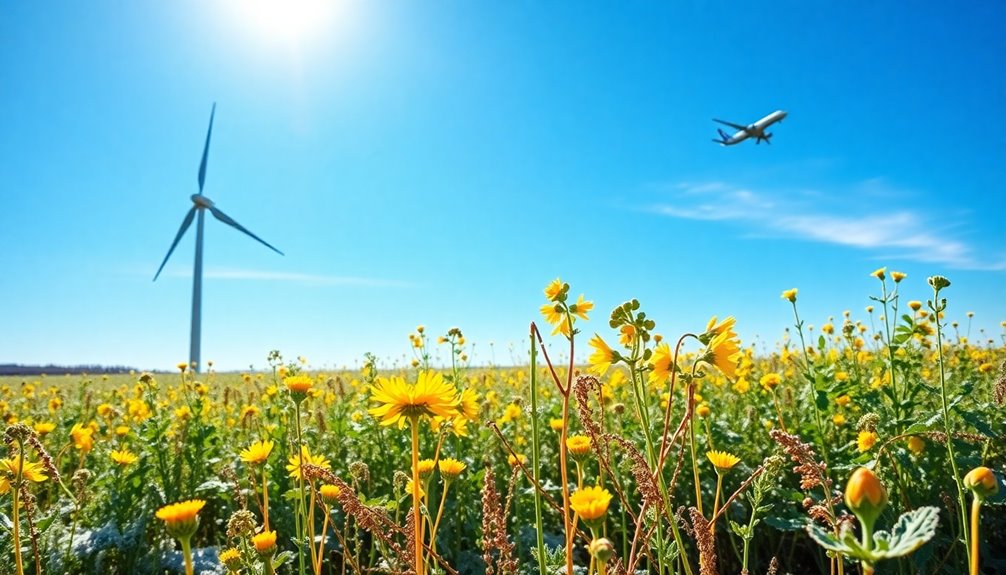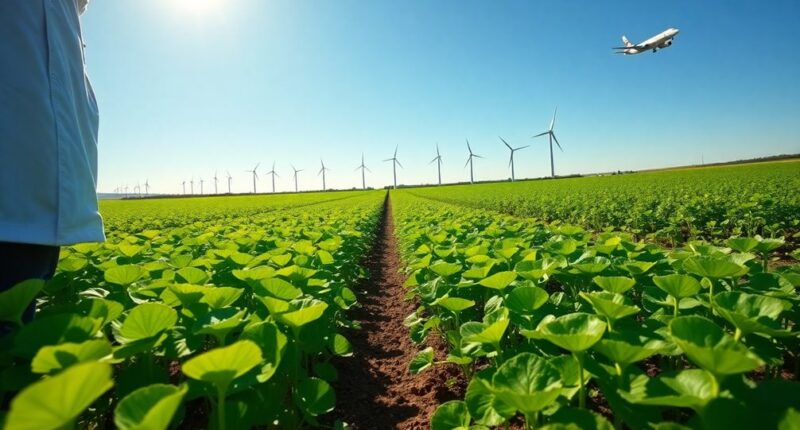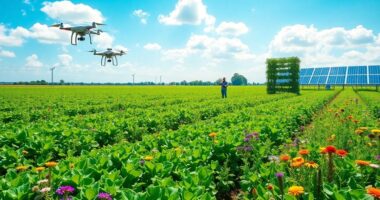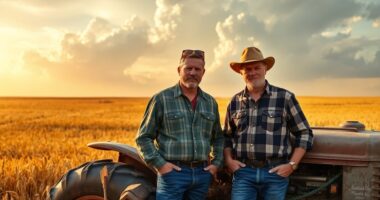Advancing a nationwide strategy for winter oilseed supply in sustainable aviation fuel (SAF) involves leveraging crops like pennycress, camelina, and carinata. These oilseeds boost biodiversity, improve soil health, and lower carbon emissions. They can generate significant volumes of SAF while enhancing crop rotation and local economies. Plus, with the right infrastructure and economic incentives, farmers can thrive in this sustainable movement. Discover how this strategy can transform the aviation industry and agriculture for a greener future.
Key Takeaways
- Implementing winter oilseed crops like pennycress, camelina, and carinata can significantly contribute to sustainable aviation fuel production targets.
- Strategic processing infrastructure is essential to support efficient oilseed supply chains and enhance SAF production capabilities nationwide.
- Utilizing meal credits from oilseed processing can reduce SAF production costs by up to 70%, making it economically viable.
- Research indicates that winter oilseeds improve soil health and biodiversity while providing a low-carbon feedstock for biofuels.
- Economic incentives such as tax credits can encourage farmers to adopt winter oilseeds, benefiting local economies and the environment.

As the demand for sustainable aviation fuel (SAF) grows, winter oilseeds like pennycress, camelina, and carinata offer an innovative solution to meet this need while enhancing environmental sustainability. These crops can thrive on existing cropland, allowing you to maximize productivity without increasing land use. By incorporating winter oilseeds into your farming practices, you not only contribute to the SAF supply chain but also improve soil health and water quality in your community.
Pennycress is particularly notable for its oil-rich seeds, which act as a cover crop to protect soil and reduce erosion. Camelina, on the other hand, boasts a low carbon intensity when converted into biofuels, making it an eco-friendly option. Carinata also plays a vital role, as it helps lower land use emissions and provides a robust rotation option with other crops. By diversifying your crops with these winter oilseeds, you're enhancing biodiversity and creating habitats for wildlife. Additionally, research conducted by University of Minnesota researchers supports the viability of these oilseed crops as effective biofuel sources.
Winter oilseeds like pennycress, camelina, and carinata enhance biodiversity, improve soil health, and support sustainable aviation fuel production.
The U.S. aims to produce 35 billion gallons of SAF annually by 2050, and winter oilseeds can significantly contribute to this goal. If all counties participate, you could see the potential to generate 1.12 billion gallons of SAF by 2048. Additionally, the flexibility of using these oilseeds alongside other feedstocks boosts production efficiency and offers cost savings, with meal credits cutting overall costs by up to 70%.
To effectively implement this strategy, enhanced infrastructure is crucial. Identifying strategic locations for processing facilities through Mixed Integer Linear Programming can minimize costs and streamline operations. Establishing biorefineries and integrating oilseed supply chains across the U.S. will ensure a consistent supply of feedstocks for SAF production.
With incentives like tax credits supporting farmers' income and encouraging investment, the economic and social benefits of embracing winter oilseeds for SAF become clear. You can be part of a growing movement that not only fuels the aviation industry sustainably but also supports a healthier planet.
Frequently Asked Questions
What Are the Economic Benefits of Using Winter Oilseeds for Aviation Fuel?
Using winter oilseeds for aviation fuel offers you several economic benefits.
You can tap into tax incentives and credits that lower your production costs significantly. Additionally, growing these crops can diversify your income, providing extra revenue from oilseed production and meal usage.
You'll also benefit from reduced soil erosion and improved soil health, which can enhance your overall farm productivity.
Ultimately, investing in these crops can lead to greater financial stability for you.
How Do Winter Oilseeds Compare to Traditional Feedstocks for Aviation Fuel?
When you think about fuel sources, you mightn't realize how winter oilseeds stack up against traditional ones.
You'll find that winter oilseeds offer lower carbon intensity, enhancing sustainability. They also protect soil during winter, reducing erosion while providing high-protein co-products for animal feed.
What Are the Environmental Impacts of Cultivating Winter Oilseeds?
Cultivating winter oilseeds has several positive environmental impacts.
You'll notice reduced nitrogen and sediment runoff, which improves water quality. These crops help prevent soil erosion by holding the soil in place.
By providing continuous cover, they enhance soil health year-round. Additionally, growing winter oilseeds supports biodiversity by offering habitats for pollinators.
How Can Farmers Be Incentivized to Grow These Oilseeds?
As the saying goes, "A penny saved is a penny earned."
You can be incentivized to grow winter oilseeds through various means. Additional income streams from cash crops enhance your profitability.
Government support, including crop insurance, can cushion any risks. Plus, rising market demand for low-carbon feedstocks can boost your earnings.
Participating in incentive programs offers agronomic support and payments, making it easier for you to incorporate these crops into your farming practices.
What Is the Future Market Demand for Sustainable Aviation Fuel?
The future market demand for sustainable aviation fuel (SAF) looks promising.
You'll see the global SAF market expanding rapidly, with projections estimating demand to reach between 11 million to 25 million metric tons by 2030.
Regulatory mandates and airline commitments drive this growth, pushing the aviation industry toward its net-zero carbon emissions goal by 2050.
With innovations in production technology, your involvement in this sector could be both impactful and profitable.
Conclusion
As you navigate the skies of innovation, embracing a nationwide strategy for winter oilseed crops like pennycress, camelina, and carinata will fuel a greener future. These resilient seeds are the bedrock of sustainable aviation fuel, sowing the seeds of change in a world eager for cleaner energy. By cultivating this vision, you're not just planting for today; you're nurturing a vibrant landscape where flight and sustainability soar hand in hand toward a brighter horizon.









